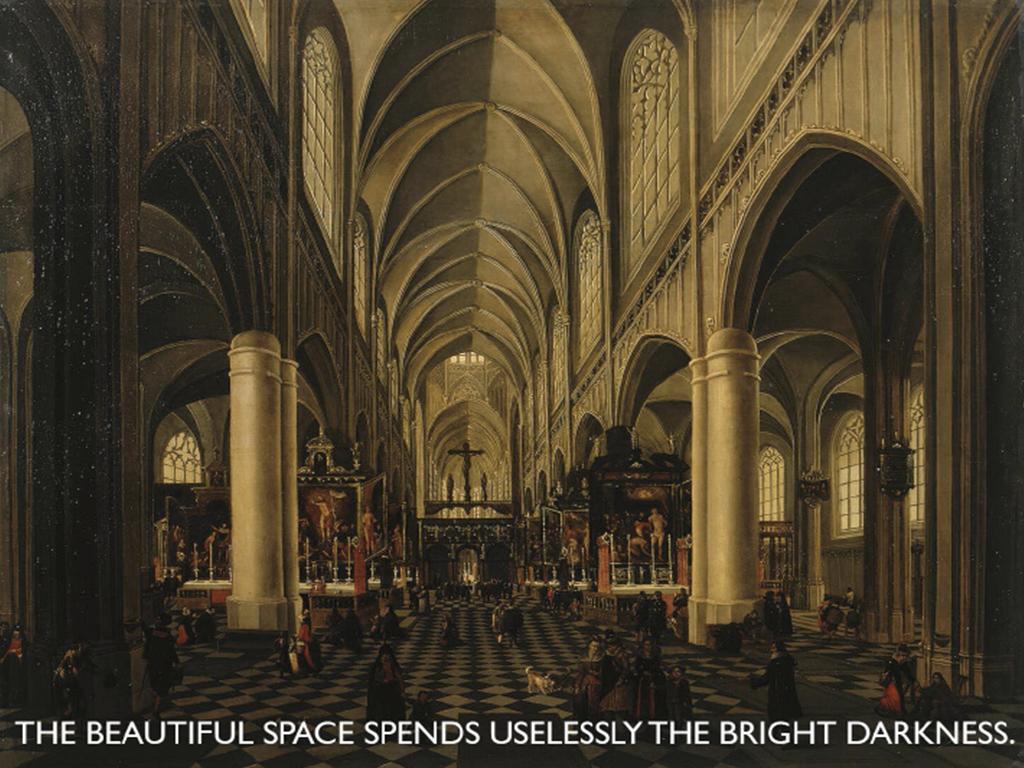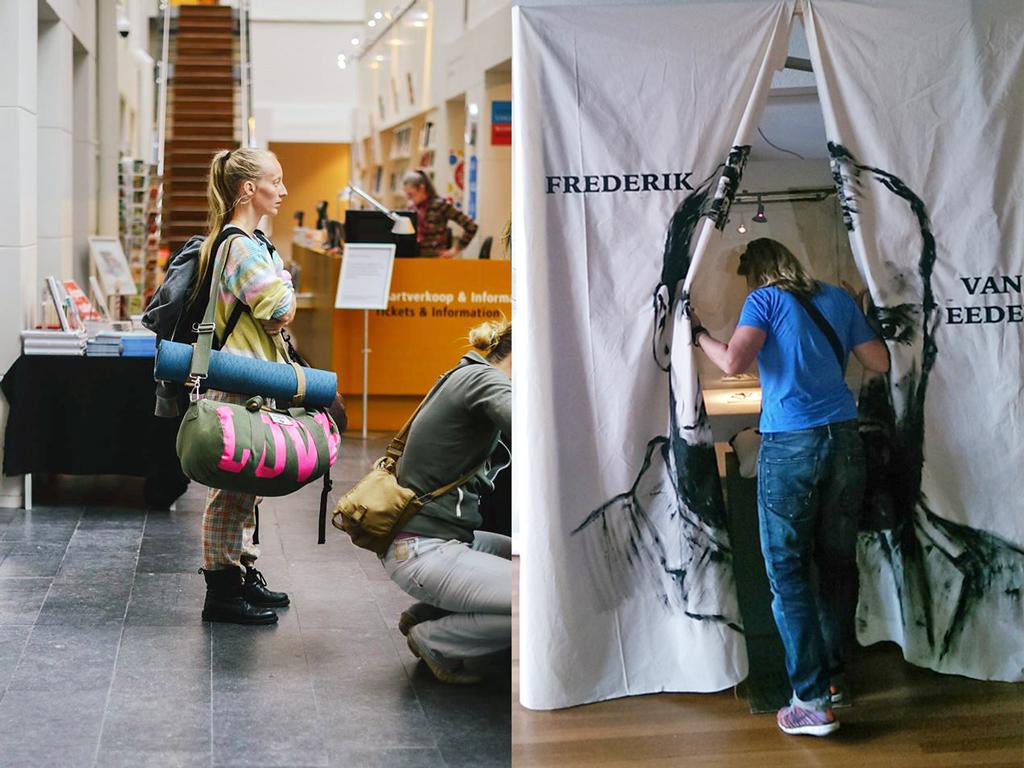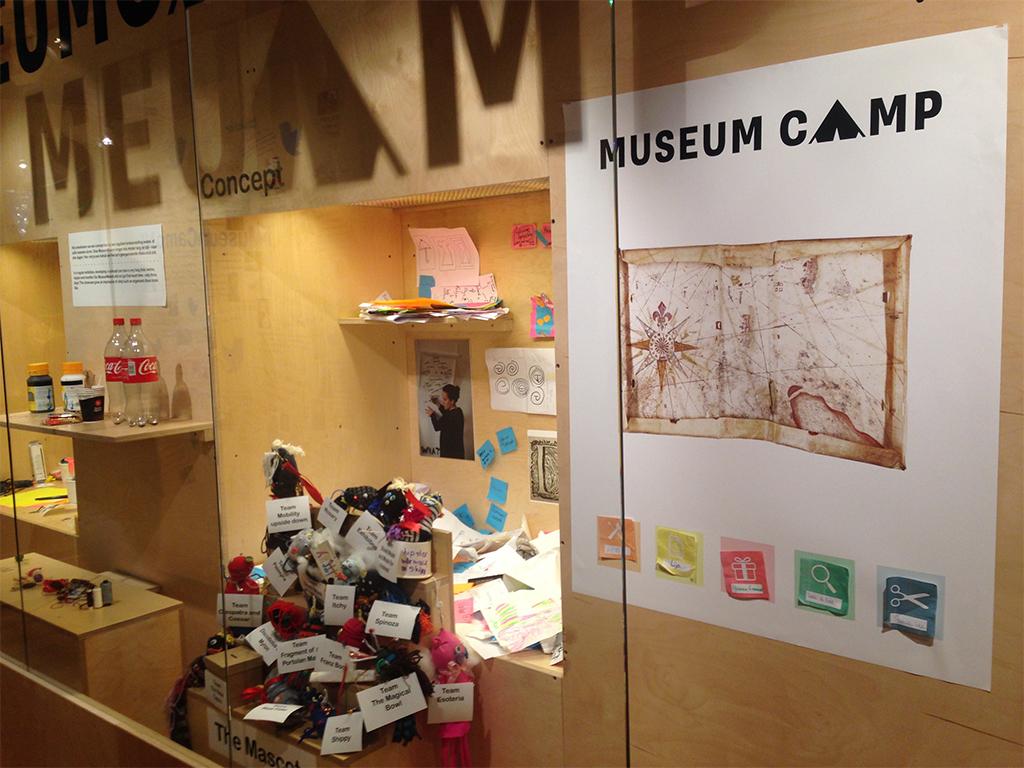Szandra Iván recently graduated at University Twente (Creative Technology) with an exploration of new prototypes that would fit the context of the meSch project (Material EncounterS with digital Cultural Heritage). Her graduation project resulted in an interactive word game that evokes reflection on one’s feelings towards the artworks on display. Dick van Dijk discusses the project with Szandra.
Can you shortly explain what you did in your graduation project?
“I designed a word game to be used in the museum. With this game I specifically want to address the social aspects of a museum visit: social interaction often is restricted to one person’s use or turn taking of an audio guide, that can isolate the user. As part of my research, I explored the use of a tangible interface that adds a physical aspect to this social experience and a memento that might provoke a more emotional bond. I evaluated my ideas with staff and visitors of Rijksmuseum Twenthe.
Starting point for my ideas was the notion of ‘the museum as a conversation’. The aim became to find exceptional ways to convey non-factual information about artifacts, reveal hidden features by peeking or eavesdropping through an installation that allows the museum visitors to construct their own experience and realize their own ideas. The installation would give way to user generated content that would open up the opportunity to say things about art that you might feel are not allowed normally.”
How did your concept develop?
“The final concept has two main goals. One of them is to encourage and facilitate conversations in a museum environment; the other is to give some indications about one’s artistic taste.
I came across the on-line course ‘Art & Activity: Interactive Strategies for Engaging with Art’ by the Museum of Modern Art (New York), that emphasized experiential learning. Besides many valuable insights and a wide range of activities, the activities that focused on the capabilities of the linguistic, the inter- and intra-personal features were the most significant. A particular game called ‘The exquisite corpse’ guided the next steps of my design decisions. Later on in the process, the museum suggested a prospective exhibition topic where these possibilities could be incorporated. In January, 2016 an exhibition on ‘taste’ (or ‘personal preference’) will open in the Rijksmuseum Twenthe. As a result of this meeting the conversation concept of the ideation so far was further extended with the aim of assessing taste.”
How does this exquisite corps game work then?
“The exquisite corpse is a grammar and poetry game from the surrealist movement, where the unconscious, the illogical and the dualism between dream and reality are confronted. The formula of the game is to let someone play around with particular parts of speech that still result in a grammatically correct sentence, such as ‘The adjective noun verb adverb the adjective noun.’ The name comes from one of the first poems created this way: “The exquisite corpse drinks the new wine.”
With an adaptation of the ‘exquisite corps’ word game, the conversation can be directed towards taste-related topics and responses can be kept concise. Instead of polar questions (yes/no, like/dislike), the certain topics of art, such as composition, materials, or theme -that relate to particular feelings towards the artworks- are addressed and combined into an abstract taste profile.
For this, a collection of universal fill-in sentences was constructed in a manner that treat the various topics correlated with taste from the viewpoint of the respondent, like this:

In the visitor test, for instance, this next poem came up as a result of filling out the blank spaces: ‘The beautiful space spends uselessly the bright darkness’, in relation to a specific painting. The visitor can print his poem and take it home with him.”
Why did you abandon the idea of a physical installation?
“I explored interaction mechanisms such listening ‘through the hole in the wall’ or holding the receiver to your ears, correspondent with their original usages. Talking would also resemble the familiar functionalities of the devices, such as ‘buzzing in’ or talking into the cone receiver. Visitors would be able to add their own questions and answers to an audio-cloud, allowing for collective listening. These concepts would have involved an elaborate speech recognition and natural language generation component that deemed them infeasible.
The interaction with technology, the first part of the conversation, could better happen with the aid of tablets. A number of stations, consisting of a tablet, would be placed at certain paintings/artifacts. When a visitor approaches the painting, the tablet presents them with ‘fill in the blank’ sentences.“
How did you evaluate your concept with visitors?
“The first assessment was done with a small group of 6 people, through a questionnaire, that referred to one of the artworks on display and directed questions, to which the expected answers were one-words from particular parts of speech. In order to have the options for several outcomes from the input words, the questionnaire requested at least 4 words (an adjective, a noun, an adverb and a verb) and opted for 6. Beside the one-line poem, a category specific taste assessment and a guide booklet with personalized titles was considered.
After the questionnaire assessment a paper prototype of the system was devised for further evaluation and presented to a limited amount of people. The prototype consisted of several slides on paper that represented the screen of the tablet and included all the possible interactions of an interactive, transparent box. The paper slides were manually operated and answers were written down on small pieces of paper and stuck on the paper slide at the corresponding position. The prototype asked six questions, two questions that result in a noun answer, two adjective ones, one adverb and one verb.
All things considered, the responses were positive and considered the test to be fun, playful, thought-provoking, and the components to be cool and reflective."


